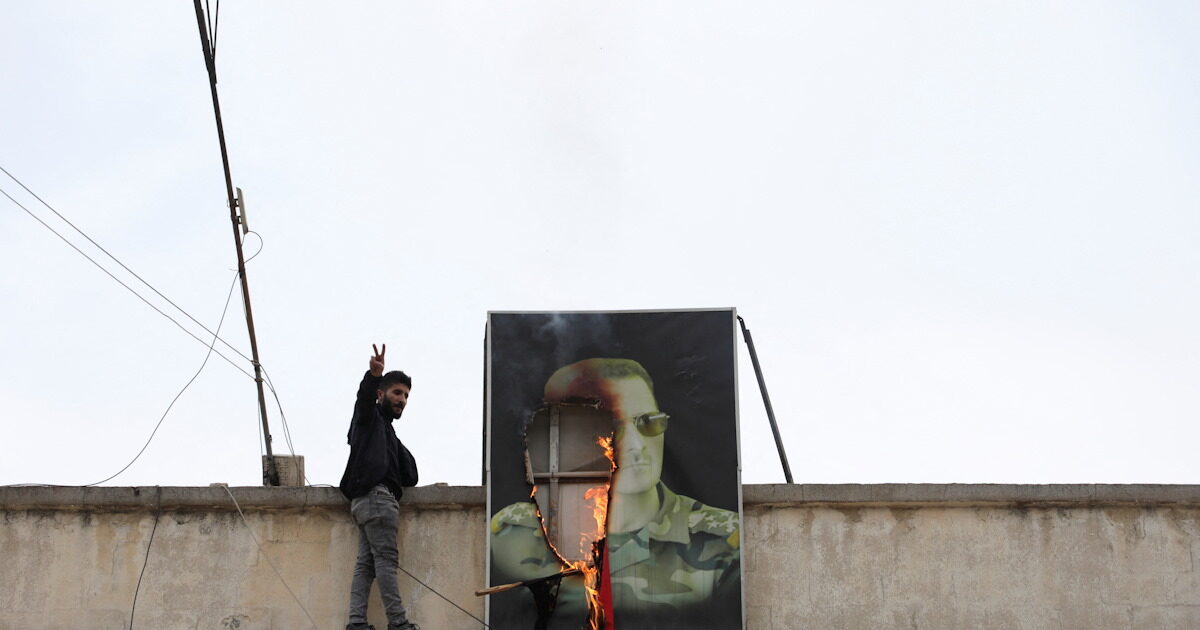In just two weeks, rebels managed to capture a number of major cities in Syriabefore reaching the capital, Damascus, and toppling the country’s president, Bashar al-Assad, 13 years after the civil war began.
Led by the team Hayat Tahrir al-Sham (HTS), the rebels, in convoys of small vehicles and motorcycles, advanced rapidly along Syria’s central north-south road, capturing Damascus without encountering much resistance.
But while many are celebrating the fall of a family dynasty that ruled Syria, the future is uncertain and the situation on the ground remains fluid, with a number of different rebel groups controlling different parts of the country, the BBC reports in an analysis which it is, after all, today’s image.
The questions are many: What is the situation in the north of the country? Where are the Russian bases located and what areas do the Turkish-backed forces control? The BBC, with a series of maps that it presents, tries to give you the answers to the most important questions.
Who controls what in Syria
The fall of the tyrannical Assad regime is due to the unexpected and rapid advance of the HTS rebels. However, despite the group controlling Syria’s key cities, it does not rule the entire country. Syria, for years, has been under the control of a range of rebel groups, such as HTS in Idlib and Kurdish forces in northern and northeastern Syria, who have also seized territory in recent days and weeks.
In this context, as the BBC reports, reaching an agreement on how to govern Syria remains difficult.


How the rebels got to Damascus
With the fronts “frozen” for years, the jihadists launched at the end of November their offensive that eventually led to the fall of Assad. After capturing Aleppo, they continued, moving south to take control of the city of Hama last Thursday. The advance continued apace and Homs was soon captured. In the early hours of Sunday, government forces lost the capital Damascus.
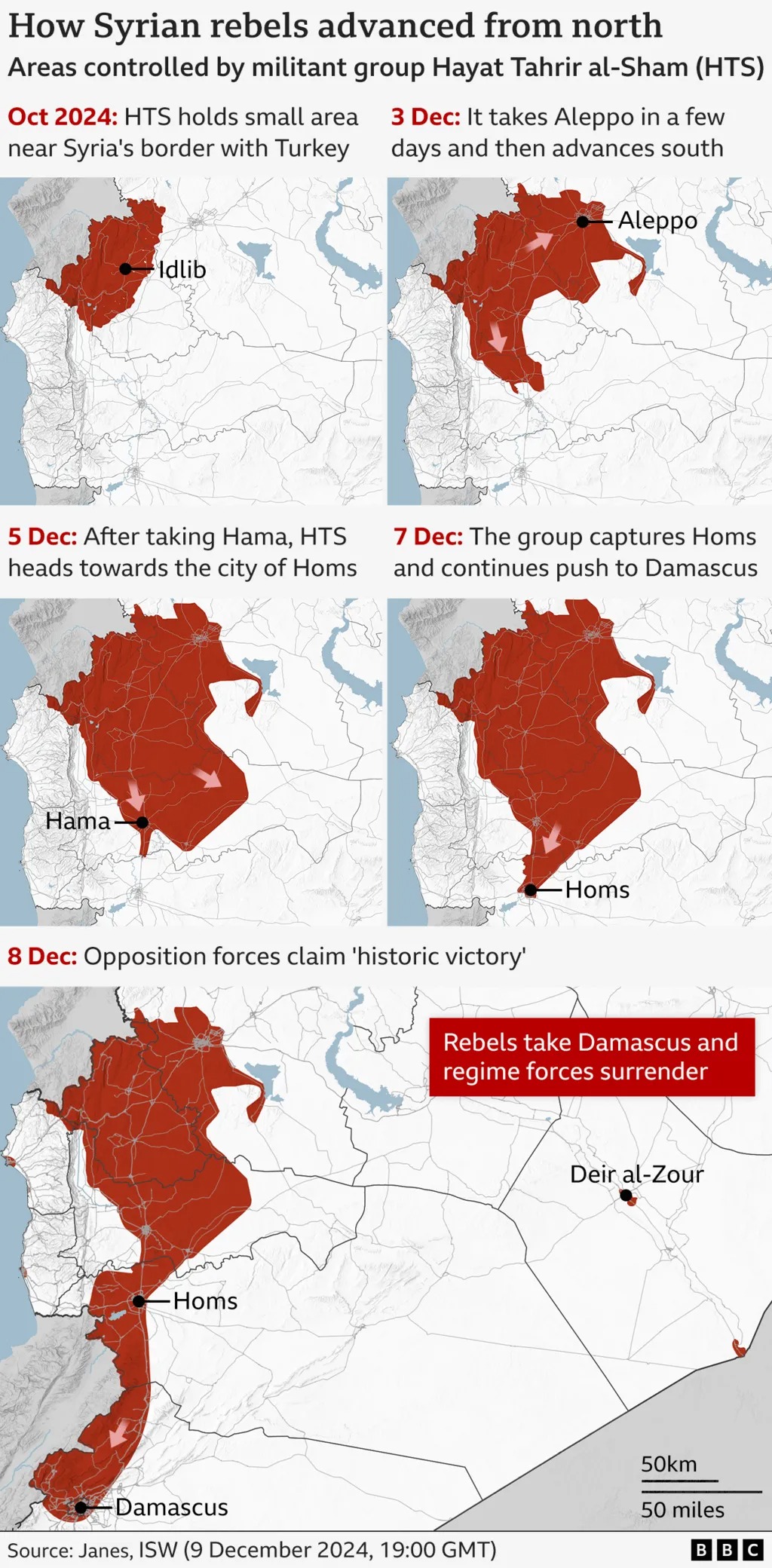

Where is Syria and how are its neighbors involved?
Syria, with a population of about 22 million people, is located on the eastern coast of the Mediterranean. It borders Turkey to the north, Lebanon and Israel to the west and southwest, Iraq to the east, and Jordan to the south.
Turkey, Western powers and several Gulf countries have supported various Syrian opposition groups to varying degrees during the conflict.
Hezbollah, based in Lebanon and backed by Iran, has fought alongside the Syrian army but has been weakened by the conflict with Israel. This is considered one of the main reasons for the success of the rebel advance.


How did Israel react?
Against the background of the transition of power in Syria, Israeli warplanes have reportedly carried out hundreds of airstrikes in the past 24 hours across the country. Israel is reportedly shelling military installations of the former government Syrian army, including weapons depots, ammunition depots, airports, naval bases and research centers.
The UK-based Syrian Observatory for Human Rights says it has recorded more than 300 Israeli strikes in Syria since the fall of the Assad regime on Sunday, including in Damascus. Israel says its actions are aimed at preventing weapons from falling “in the hands of extremists” as Syria moves into the post-Assad era.
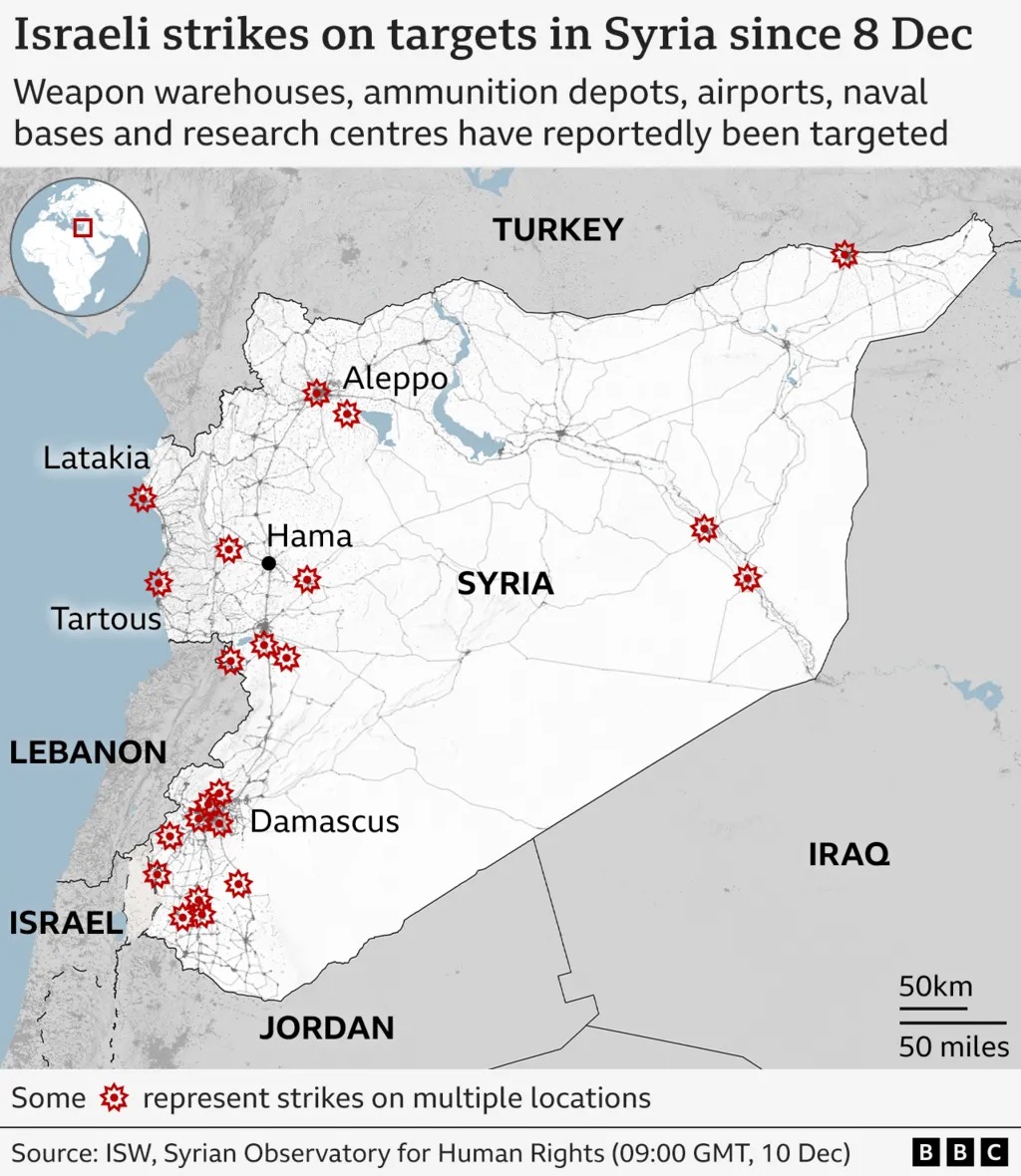

At the same time, Israel has invaded the demilitarized “dead” zone beyond the occupied territories in the Golan Heights, saying the 1974 deal with Syria “collapsed” due to the fall of Assad. At the same time, he denied that Israeli tanks are approaching Damascus, but confirmed that he has troops operating on Syrian territory beyond the demilitarized zone.
The Golan Heights is a rocky plateau about 60 kilometers southwest of Damascus. Israel seized the area from Syria in the latter stages of the Six-Day War in 1967 and unilaterally annexed it in 1981. This move has not been recognized by any state internationally except the United States.
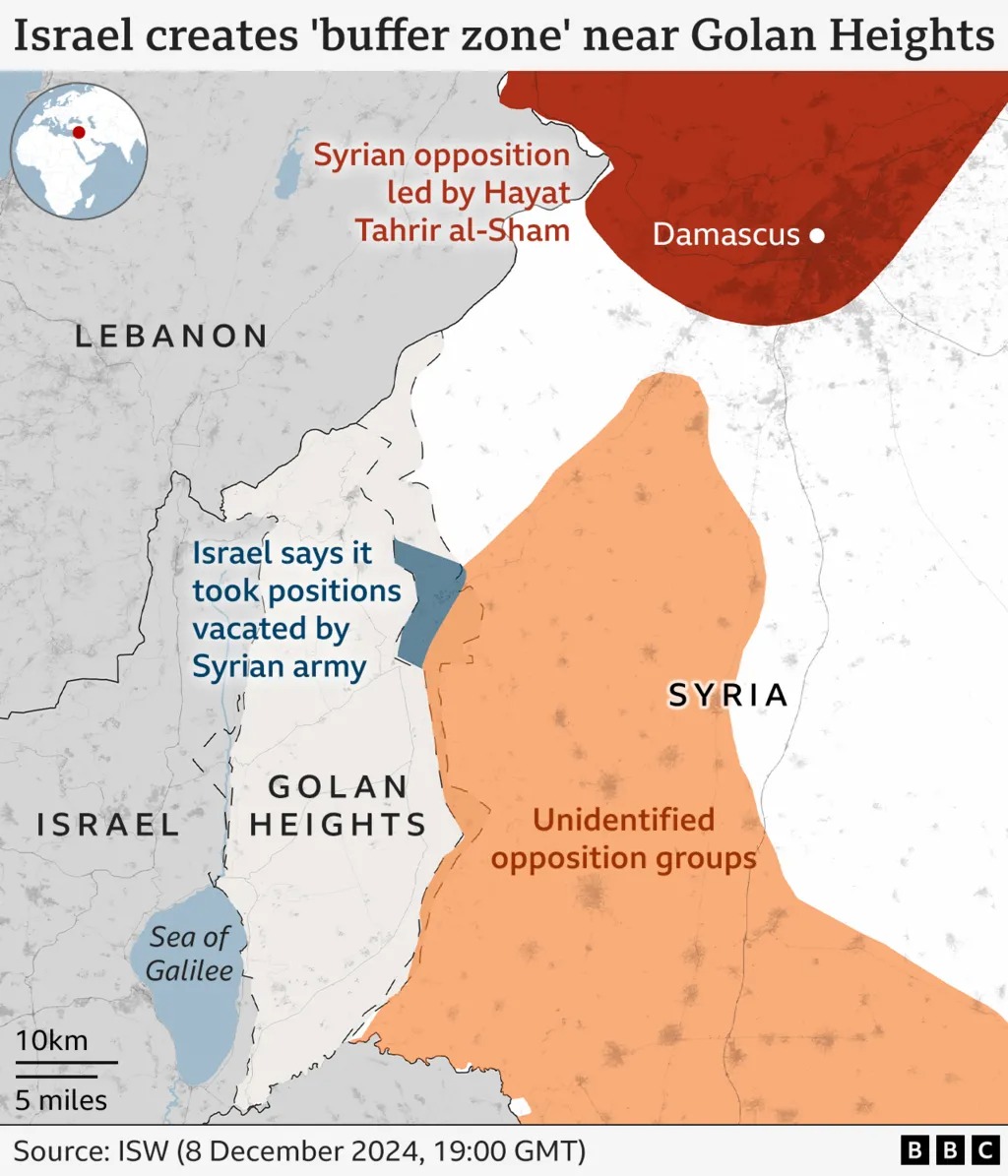

What is happening in northern Syria?
The northern city of Manbij saw clashes between rebels, Turkish-backed forces and Kurdish forces. Both sides claimed to have captured parts of the city, and fighting reportedly continued in some neighborhoods.
Analysts at the Institute for the Study of War said they could not yet ascertain who is in control of Manbij.
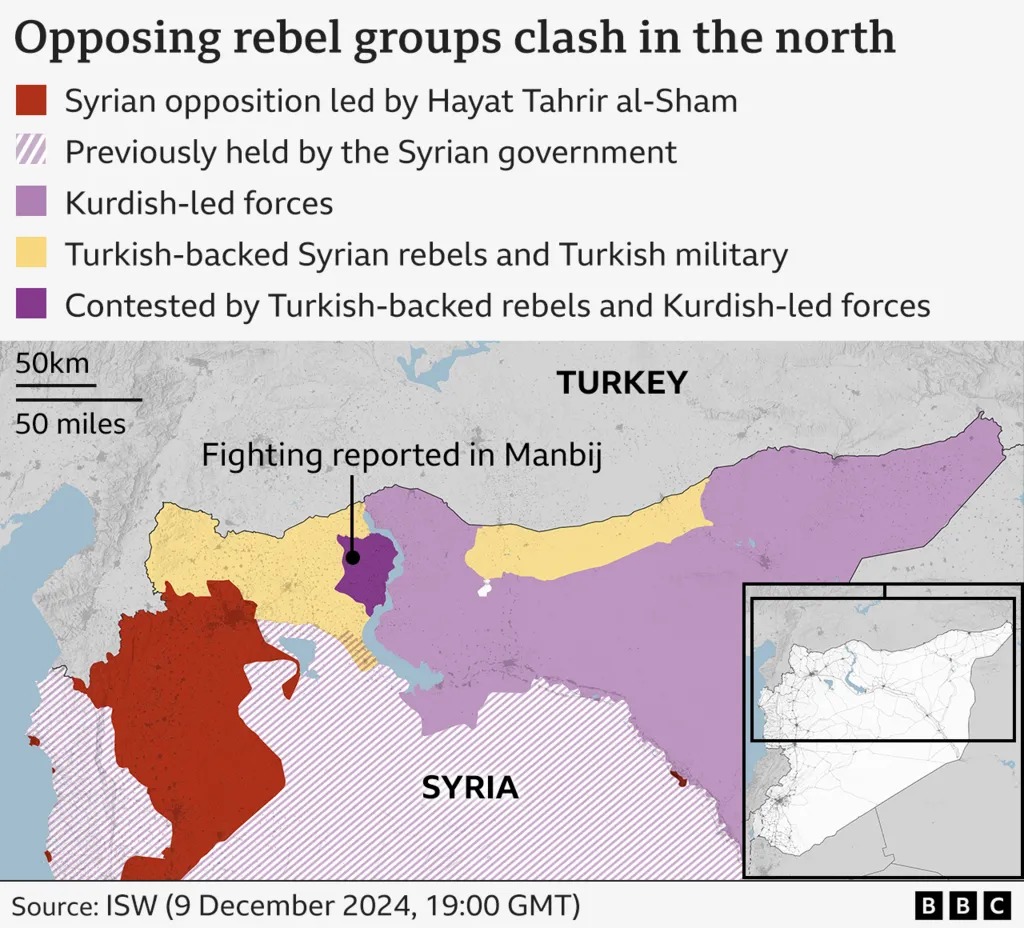

Where are the Russian bases?
In 2015, Russia sent thousands of troops to Syria to help Assad. In return, Russia received a 49-year lease on two military bases off the country’s coast.
The port of Tartus is Russia’s only major overseas naval base and also its only naval base in the Mediterranean. Along with the Khmeinim air base near Latakia, which is often used for flights to Africa, the two bases play an important role in Russia’s ability to project power regionally.
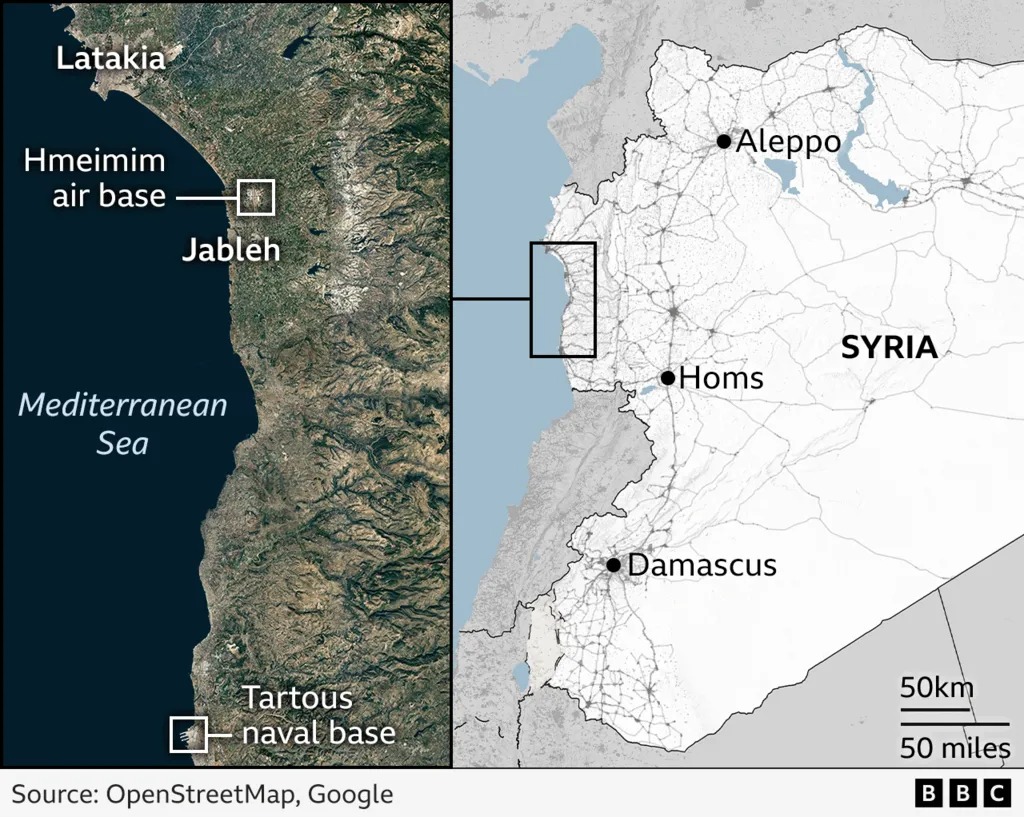

The Kremlin has said it will hold talks with Syria’s new administration about the future of both military bases.
